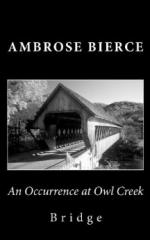|
This section contains 2,428 words (approx. 9 pages at 300 words per page) |

|
SOURCE: Barrett, Gerald R., and Thomas L. Erskine. “Language and Theme in ‘An Occurrence at Owl Creek Bridge’.” In From Fiction to Film: Ambrose Bierce's “An Occurrence at Owl Creek Bridge,” pp. 69-75. Encino, Calif.: Dickenson Publishing Company, Inc., 1973.
In the following essay, Barrett and Erskine offer a stylistic and thematic analysis of “An Occurrence at Owl Creek Bridge.”
Although “An Occurrence at Owl Creek Bridge” is commonly regarded as Ambrose Bierce's best and most famous short story, its “surprise ending” is not universally admired. Seeing obvious comparisons to O. Henry's “The Furnished Room,” Cleanth Brooks and Robert Penn Warren regard the ironic turn of events as an unjustified “trick,” existing for its own sake and totally without what they call “fictional meaning.”1 W. Gordon Cunliffe also notes the superficial resemblance between the stories by Bierce and O. Henry, but while he describes the O. Henry ending as...
|
This section contains 2,428 words (approx. 9 pages at 300 words per page) |

|


